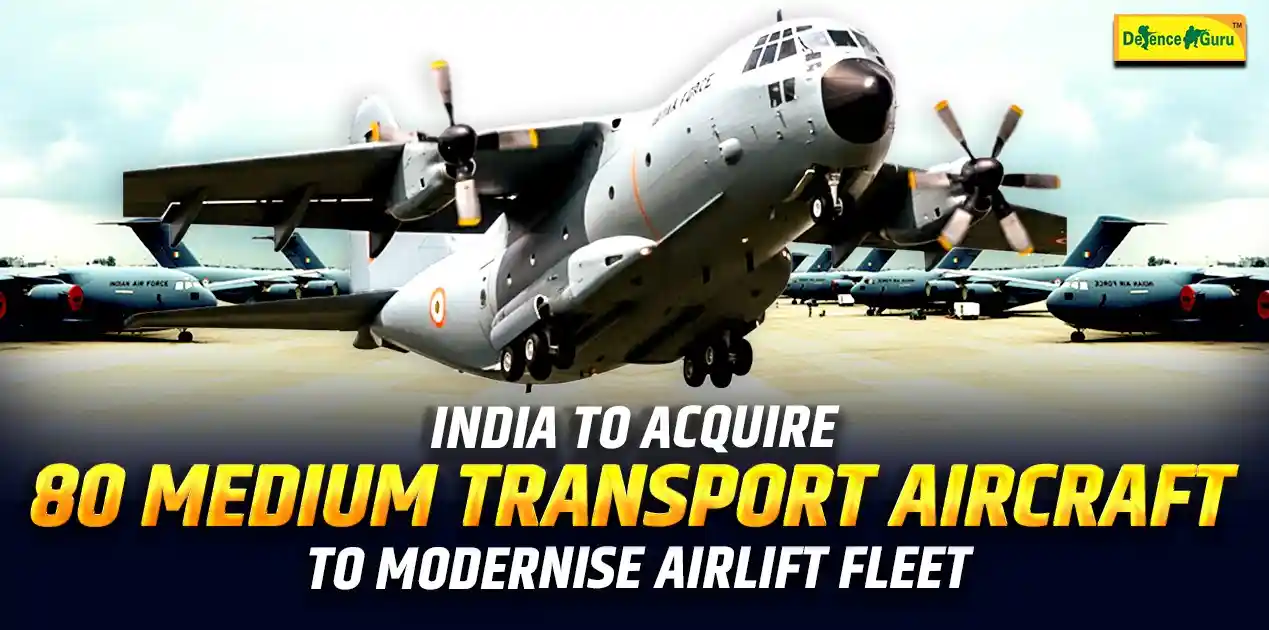India to Acquire 80 Medium Transport Aircraft
In a big leap towards its airlift and logistics capability, the Indian Ministry of Defence is set to acquire close to 80 Medium Transport Aircraft for the Indian Air Force move expected to be a game-changer in the Atmanirbhar Bharat and Make in India initiatives.
Valued at between $6–8 billion, this ambitious project will replace the ageing An-32 fleet, which has served the nation with distinction for over four decades. These new aircraft will dramatically boost India's strategic mobility, enabling rapid troop movement, humanitarian aid, and logistical operations across challenging terrains-from the icy heights of Ladakh to island territories in the Indian Ocean.
A Leap in Airlift Capability
The future MTA will have advanced avionics, higher payload carriage, longer radius, and multi-role capability that would provide a generational leap in India's transport aviation. This will not only enhance the tactical and strategic flexibility of the IAF but also reinforce 'Atmanirbharta' in defence manufacturing.
Global Contenders in the Race
Three global aerospace giants are in the race for this landmark tender:
Lockheed Martin C-130J Super Hercules (USA): Already part of the IAF's existing fleet, the C-130J brings proven reliability and established maintenance infrastructure. However, its relatively lower payload capacity might limit its suitability for future heavy-lift missions.
Embraer KC-390 Millennium (Brazil): An affordable, multi-mission aircraft that is recognized for its fuel efficiency and capability to operate in dual functions: notably refueling mid-air and medical evacuation.
Airbus A400M Atlas (Europe): As the most capable of the three, the A400M provides unmatched lift and endurance for long-range missions. While it comes with a higher acquisition cost, its strategic reach and payload advantage make it ideal for expeditionary operations.
Promoting Indigenous Manufacturing
The MTA's RFP is likely to be issued by early 2026 under the "Buy and Make (Indian)" category of the DAP. The framework encourages global collaboration with Indian defense firms such as Hindustan Aeronautics Limited, Tata Advanced Systems, and Larsen & Toubro, with significant technology transfer and production in India.
This will further help develop India's aerospace ecosystem and, at the same time, will create thousands of high-skilled job opportunities while fostering long-term industrial growth in the sector.
Building a Layered Transport Network
The MTA program will integrate effectively with the evolving transport architecture of India, including the indigenous production of the C-295MW aircraft being manufactured in Gujarat under the Tata-Airbus partnership, along with the in-service C-17 Globemaster-III fleet. These aircraft will have a synergistic effect on each other to provide a layered airlift capability from tactical supply runs to heavy strategic missions.
Toward a Self-Reliant Future
Ministry officials have said that lifecycle cost, operational efficiency, and industrial participation will be the main focus of the evaluation process. As and when the new fleet becomes operational, it will modernize not just India's transport capabilities, but also its position as a regional aerospace and defense hub, backed by state-of-the-art technology and indigenous manufacturing strength. With this bold leap, India indicates a very clear intent: to redefine the future of its airlift operations, deepen international defence collaborations, and drive its aerospace industry towards a new era of strategic autonomy and global influence.
Read more:
India to Commence Indigenous Fighter Jet Engine Manufacturing Within a Year
DRDO’s ‘Swayam Raksha Kavach’ Makes Tejas Mk-1A a Stealth-Capable Fighter

















